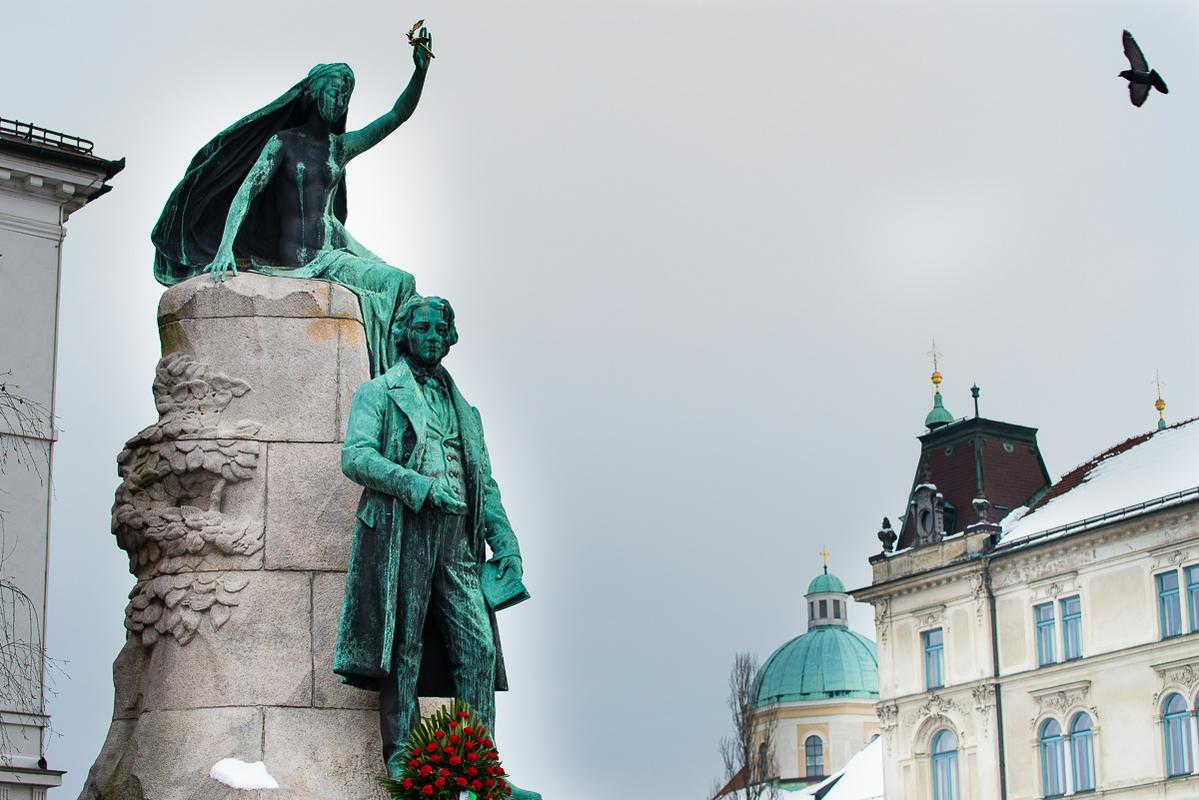
Lying in the heart of Ljubljana, the picturesque Prešeren Square is named after, often described as the greatest Slovenian poet of all time. His statue occupies a prominent space on the square, but despite appearing innocent to modern eyes, the work caused quite a stir when it was erected more than a century ago.
At the turn from the 19th to the 20th century, the Slovenian Lands were undergoing a period of national reawakening. It was then that Prešeren began to be celebrated as a national hero. He became an iconic figure even to those who had never read his works.
In 1905, Mayor Ivan Hribar decided to erect a statue of Prešeren in central Ljubljana. The prominent architect and urbanist Max Fabiani designed the pedestal for the statue, and his committee selected Ivan Zajec to work on the statue itself. Zajec was an accomplished sculptor, but designing a sculpture of an early 19th century poet - whose exact appearance had always been somewhat of a mystery - was no easy task. He had to destroy his first proposal after a spate of negative reviews. At the end, Zajec decided to adorn his work with a series of profiles from Prešeren’s literary works - and a muse wearing a robe that revealed her breasts. Almost immediately, her bosom caused one of the biggest controversies of the era.
For several years, the Slovenian people had been increasingly split between liberal and conservative factions. Zajec’s statue quickly added fuel to the fire. For weeks, the entire Slovenian society seemed to be divided between those who accepted the statue and those who were scandalized by the muse. Newspapers devoted seemingly endless columns arguing their side of the story. Bishop Anton Bonaventura Jeglič quickly made up his own mind and asked that the muse be removed and replaced with a woman wearing something more decent. The satirical journal Osa ("The Wasp") joined in by publishing a poem mocking the bishop. Other conservative Catholics were upset that the sinful statue stood in front of the Franciscan Church and on a square that had previously bore the name of the Virgin Mary.
Eventually, the statue became an accepted part of Ljubljana’s cityscape and now serves as popular meeting place for visitors alike. Prešeren himself is also as popular as ever, and few of those who pass his statue are aware of the storm caused by his muse and her revealing robe.
Jaka Bartolj

































































